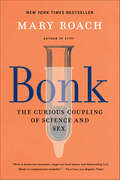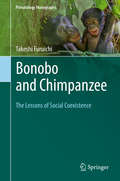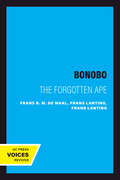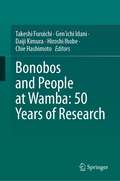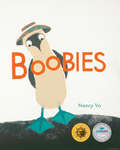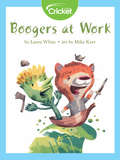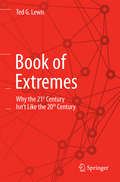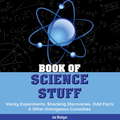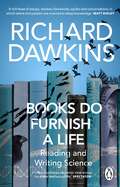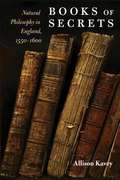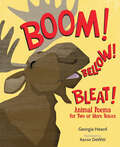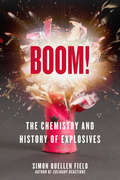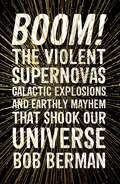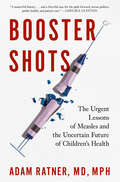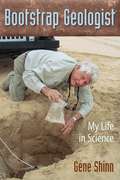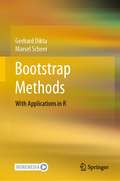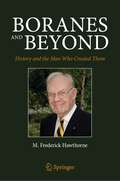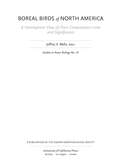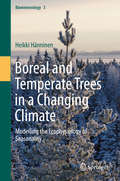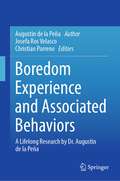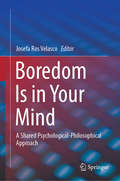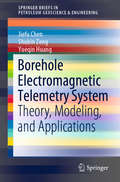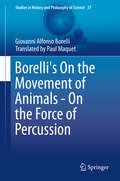- Table View
- List View
Bonk: The Curious Coupling of Science and Sex
by Mary RoachA New York Times Bestseller "Rich in dexterous innuendo, laugh-out-loud humor and illuminating fact. It’s compulsively readable." —Los Angeles Times Book ReviewIn Bonk, the best-selling author of Stiff turns her outrageous curiosity and insight on the most alluring scientific subject of all: sex. Can a person think herself to orgasm? Why doesn't Viagra help women—or, for that matter, pandas? Can a dead man get an erection? Is vaginal orgasm a myth? Mary Roach shows us how and why sexual arousal and orgasm—two of the most complex, delightful, and amazing scientific phenomena on earth—can be so hard to achieve and what science is doing to make the bedroom a more satisfying place.
Bonobo and Chimpanzee: The Lessons of Social Coexistence (Primatology Monographs)
by Takeshi FuruichiThis book describes the similarities and differences between two species, bonobos and chimpanzees, based on the three decades the author has spent studying them in the wild, and shows how the contrasting nature of these two species is also reflected in human nature. The most important differences between bonobos and chimpanzees, our closest relatives, are the social mechanisms of coexistence in group life. Chimpanzees are known as a fairly despotic species in which the males exclusively dominate over the females, and maintain a rigid hierarchy. Chimpanzees have developed social intelligence to survive severe competition among males: by upholding the hierarchy of dominance, they can usually preserve peaceful relations among group members. In contrast, female bonobos have the same or even a higher social status than males. By evolving pseudo-estrus during their non-reproductive period, females have succeeded in moderating inter-male sexual competition, and in initiating mate selection. Although they are non-related in male-philopatric society, they usually aggregate in a group, enjoy priority access to food, determine which male is the alpha male, and generally maintain much more peaceful social relations compared to chimpanzees. Lastly, by identifying key mechanisms of social coexistence in these two species, the author also seeks to find solutions or “hope” for the peaceful coexistence of human beings."Takeshi Furuichi is one of very few scientists in the world familiar with both chimpanzees and bonobos. In lively prose, reflecting personal experience with apes in the rain forest, he compares our two closest relatives and explains the striking differences between the male- dominated and territorial chimpanzees and the female-centered gentle bonobos."Frans de Waal, author of Mama’s Last Hug - Animal Emotions and What They Tell Us about Ourselves (Norton, 2019)
Bonobo: The Forgotten Ape
by Frans B. de Waal Frans LantingThis remarkable primate with the curious name is challenging established views on human evolution. The bonobo, least known of the great apes, is a female-centered, egalitarian species that has been dubbed the "make-love-not-war" primate by specialists. In bonobo society, females form alliances to intimidate males, sexual behavior (in virtually every partner combination) replaces aggression and serves many social functions, and unrelated groups mingle instead of fighting. The species's most striking achievement is not tool use or warfare but sensitivity to others.In the first book to combine and compare data from captivity and the field, Frans de Waal, a world-renowned primatologist, and Frans Lanting, an internationally acclaimed wildlife photographer, present the most up-to-date perspective available on the bonobo. Focusing on social organization, de Waal compares the bonobo with its better-known relative, the chimpanzee. The bonobo's relatively nonviolent behavior and the tendency for females to dominate males confront the evolutionary models derived from observing the chimpanzee's male power politics, cooperative hunting, and intergroup warfare. Further, the bonobo's frequent, imaginative sexual contacts, along with its low reproduction rate, belie any notion that the sole natural purpose of sex is procreation. Humans share over 98 percent of their genetic material with the bonobo and the chimpanzee. Is it possible that the peaceable bonobo has retained traits of our common ancestor that we find hard to recognize in ourselves?Eight superb full-color photo essays offer a rare view of the bonobo in its native habitat in the rain forests of Zaire as well as in zoos and research facilities. Additional photographs and highlighted interviews with leading bonobo experts complement the text. This book points the way to viable alternatives to male-based models of human evolution and will add considerably to debates on the origin of our species. Anyone interested in primates, gender issues, evolutionary psychology, and exceptional wildlife photography will find a fascinating companion in Bonobo: The Forgotten Ape.
Bonobos and People at Wamba: 50 Years of Research
by Takeshi Furuichi Gen'Ichi Idani Daiji Kimura Hiroshi Ihobe Chie HashimotoThis book reviews all the findings about bonobos and the local people of Wamba village in the Luo Scientific Reserve in the Democratic Republic of the Congo over the last 50 years. In 1973, Takayoshi Kano, a Japanese primatologist, traveled across a vast area of the Congo Basin with a bicycle and found Wamba village to be a promising site to start his first studies on wild bonobos. Since then, many researchers from Japan and all over the world have been working at Wamba, now the longest standing study site, to uncover various aspects of the ecology and behavior of this most recently identified great ape species. The researchers study bonobo behaviors and carry out various activities for the conservation of bonobos. They also conduct anthropological studies of local people who live with bonobos and believe them to be distant relatives from the same family, living in the forest. This book is published in commemoration of 2023 marking the 50th year of study. The main chapters are contributed by active researchers studying bonobos and the local people at Wamba. The book also includes contributions from various eminent researchers who have carried out short-term research or have supported research at Wamba, which helps place these studies of bonobos in a broader primatological or anthropological perspective. This book will be a useful resource for professional researchers in primatology and anthropology, as well as graduate or undergraduate students interested in these research fields.
Boobies
by Nancy VoA cheeky celebration of boobies! “You have just opened a book about boobies.” Meet the Blue-footed Booby, who does not have any boobies at all, since only mammals have boobies. We learn that mammals have boobies to feed babies — even though milk can also come from plants. And did you know that boobies, or breasts, vary from person to person, that boobies change over time, and that different animals have different numbers of boobies? Witty and wide-ranging, this eye-opening picture book goes on to explore connections between boobies and mountains, boobies and ancient art and, of course, boobies and you! Nancy Vo’s latest creation is fresh and funny, while serving up just the right amount of fact. Punchy prose is complemented by striking stencil art in a retro palette, making this the perfect gift for curious young children, older children getting to know their bodies, and anyone ready to boldly celebrate boobies! Key Text Features explanation facts illustrations labels map timeline vignettes Correlates to the Common Core State Standards in English Language Arts: CCSS.ELA-LITERACY.RI.K.2 With prompting and support, identify the main topic and retell key details of a text. CCSS.ELA-LITERACY.RI.1.2 Identify the main topic and retell key details of a text. CCSS.ELA-LITERACY.RI.1.7 Use the illustrations and details in a text to describe its key ideas.
Boogers at Work
by Laura WhiteIf you've ever blown a snot rocket, had a cold, or picked your nose, you know that your nose is capable of amazing things.
Book of Extremes: Why the 21st Century Isn’t Like the 20th Century
by Ted G. LewisWhat makes the 21st century different from the 20th century? This century is the century of extremes -- political, economic, social, and global black-swan events happening with increasing frequency and severity. Book of Extremes is a tour of the current reality as seen through the lens of complexity theory - the only theory capable of explaining why the Arab Spring happened and why it will happen again; why social networks in the virtual world behave like flashmobs in the physical world; why financial bubbles blow up in our faces and will grow and burst again; why the rich get richer and will continue to get richer regardless of governmental policies; why the future of economic wealth and national power lies in comparative advantage and global trade; why natural disasters will continue to get bigger and happen more frequently; and why the Internet - invented by the US -- is headed for a global monopoly controlled by a non-US corporation. It is also about the extreme innovations and heroic innovators yet to be discovered and recognized over the next 100 years. Complexity theory combines the predictable with the unpredictable. It assumes a nonlinear world of long-tailed distributions instead of the classical linear world of normal distributions. In the complex 21st century, almost nothing is linear or normal. Instead, the world is highly connected, conditional, nonlinear, fractal, and punctuated. Life in the 21st century is a long-tailed random walk - Levy walks -- through extreme events of unprecedented impact. It is an exciting time to be alive.
Book of Science Stuff
by Joe RhatiganRather than paying tribute to the great discoveries and discoverers, the BOOK OF SCIENCE STUFF takes a fun look at the silly, hilarious, horrible underbelly of science. In a series of enjoyable short accounts, it focuses on the failures, reveals the petty squabbles, and introduces the "nerds" who labored in labs around the world. Check out the blunders--like scary Cold War experiments, idiotic research grants, and space study stupidity; meet the "Sigmund Frauds" and the real Frankensteins; and peek into the secret lives of scientists (if you dare). See how science makes the world go round--and directly affects everyone's daily lives. Scrutinize Hollywood's presentation of science on film and TV. And ponder the ways science sometimes pulls the wool over our eyes.
Books do Furnish a Life: An electrifying celebration of science writing
by Richard Dawkins'A rich feast of his essays, reviews, forewords, squibs and conversations, in which talent and passion are married to deep knowledge.' Matt Ridley'Enjoy the unfailing clarity of his thought and prose, as well as the grandeur of his vision of life on Earth.' - Mark Cocker, Spectator'Richard Dawkins is a thunderously gifted science writer.' Sunday TimesIncluding conversations with Neil DeGrasse Tyson, Steven Pinker, Matt Ridley and more, this is an essential guide to the most exciting ideas of our time and their proponents from our most brilliant science communicator.Books Do Furnish a Life is divided by theme, including celebrating nature, exploring humanity, and interrogating faith. For the first time, it brings together Richard Dawkins' forewords, afterwords and introductions to the work of some of the leading thinkers of our age - Carl Sagan, Lawrence Krauss, Jacob Bronowski, Lewis Wolpert - with a selection of his reviews to provide an electrifying celebration of science writing, both fiction and non-fiction. It is also a sparkling addition to Dawkins' own remarkable canon of work.Plenty of other scientists write well, but no one writes like Dawkins... here is Dawkins the teacher, the scholar, the polemicist, the joker, the aesthete, the poet, the satirist, the man of compassion as well as indignation, the slayer of superstition and, above all, the scientist. - Areo Magazine
Books of Secrets: Natural Philosophy in England, 1550-1600
by Allison KaveyHow cultural categories shaped--and were shaped by--new ideas about controlling nature Ranging from alchemy to necromancy, "books of secrets" offered medieval readers an affordable and accessible collection of knowledge about the natural world. Allison Kavey's study traces the cultural relevance of these books and also charts their influence on the people who read them. Citing the importance of printers in choosing the books' contents, she points out how these books legitimized manipulating nature, thereby expanding cultural categories, such as masculinity, femininity, gentleman, lady, and midwife, to include the willful command of the natural world.
Boom! Bellow! Bleat!: Animal Poems for Two or More Voices
by Georgia HeardA NCTE Notable Poetry BookThis playful collection of poems--peppered with an astounding variety of animal sounds--is meant to be read aloud together.These poems for two or more voices explore the myriad sounds animals make--from a frog's jug-o-rum to a fish's boom! to an elephant's bark. Laced with humor, the poems are a delight to read aloud and cover all major classes of animals: mammals, birds, fish, reptiles, amphibians, insects, even a crustacean! Readers will learn how to estimate the temperature by counting a cricket's chirps and see how creatures make sounds at specific pitches and frequencies, so that they can be heard despite other noise around them. Extensive end notes provide more information on the animals and how and why they make the sounds they do. Written by noted children's poet Georgia Heard, this is an ideal collection for parents and children to share, or for a fun, interactive classroom read-aloud.
Boom!: The Chemistry and History of Explosives
by Simon Quellen FieldBlack powder, the world's first chemical explosive, was originally developed in the seventh century, during China's Tang dynasty. It was a crude mixture at first, but over time chemists discovered the optimum proportion of sulfur, charcoal, and nitrates, as well as the best way to mix them so that the particles of each component were tiny and homogenous, resulting in a complete and powerful reaction. Author and chemistry buff Simon Quellen Field takes readers on a decades-long journey through the history of things that go boom, from the early days of black powder to today's modern plastic explosives. Not just the who, when, and why, but also the how. How did Chinese alchemists come to create black powder? What accidents led to the discovery of high explosives? How do explosives actually work on a molecular scale? And though most people have a vague understanding that dynamite is more powerful than gunpowder, what does it mean to be more powerful? Boom! The Chemistry and History of Explosives goes back to the original papers and patents written by the chemists who invented them, to shed light on their development, to explore the consequences of their use for good and ill, and to give the reader a basic understanding of the chemistry that makes them possible.
Boom!: The Violent Supernovas, Galactic Explosions, and Earthly Mayhem that Shook our Universe
by Bob BermanLooking at the night sky, you&’d be forgiven for thinking it&’s all quiet up there in space. But you&’d be wrong. Extreme events are forever unfolding: galaxies explode, cosmic debris hurtles through the heavens and our own Milky Way is on a collision course with the giant Andromeda galaxy. Mayhem moulded the cosmos, shaped life on Earth and at times threatened to end it. With an enduring sense of wonder, through cataclysms great and small, Bob Berman presents a destructive history of our universe.
Booster Shots: The Urgent Lessons of Measles and the Uncertain Future of Children's Health
by Adam Ratner MD, MPHA pediatrician and infectious disease specialist warns of the resurgence of measles, the antivaccine movement, and how we can prepare for the next pandemicEvery single child diagnosed with measles represents a system failure—an inexcusable unforced error. The technology to prevent essentially 100 percent of measles cases has been in our hands since before the moon landing. But this serious airborne disease, once seemingly defeated, is resurgent around the globe. Why, at a time when biomedical science is so advanced, do parents turn away from vaccination, endangering their own children and the health of the wider population? Using a combination of patient narrative, historical analysis, and scientific research, Dr. Adam Ratner, pediatrician and infectious disease specialist, argues that the reawakening of measles and the subsequent coronavirus pandemic are bellwethers of forgotten knowledge—indicators of decaying trust in science and an underfunded public health infrastructure. Our collective amnesia is starkly revealed in the growth of the antivaccine movement and the missteps in our responses to the beginning of the coronavirus outbreak, leading to preventable tragedies in both cases. Trust in medicine and public health is at a nadir. Declining vaccine confidence threatens a global reemergence of other vaccine-preventable diseases in the coming years. Ratner details how solving these problems requires the use of literal and figurative &“booster shots&” to gather new knowledge and retain the crucial lessons of the past. Learning—and remembering—these lessons is our best hope for preparing for the next pandemic. With attention and care and the tools we already have, we can make the world much safer for children tomorrow than it is today.
Bootstrap Geologist: My Life in Science
by Gene ShinnIn Bootstrap Geologist Shinn enthusiastically shares the highs and lows of his remarkable life. Taking readers around the globe as well as below the ocean, he recounts the painstaking process of data gathering that can lead to paradigm-breaking discoveries. He emphasizes the importance of field science and pointedly addresses the use and abuse of scientific research and the emergence of market-funded research.
Bootstrap Methods: With Applications in R
by Gerhard Dikta Marsel ScheerThis book provides a compact introduction to the bootstrap method. In addition to classical results on point estimation and test theory, multivariate linear regression models and generalized linear models are covered in detail. Special attention is given to the use of bootstrap procedures to perform goodness-of-fit tests to validate model or distributional assumptions. In some cases, new methods are presented here for the first time. The text is motivated by practical examples and the implementations of the corresponding algorithms are always given directly in R in a comprehensible form. Overall, R is given great importance throughout. Each chapter includes a section of exercises and, for the more mathematically inclined readers, concludes with rigorous proofs. The intended audience is graduate students who already have a prior knowledge of probability theory and mathematical statistics.
Boranes and Beyond: History and the Man Who Created Them
by M. Frederick HawthorneTracing the life of a giant in inorganic chemistry and key trends in his science, Boranes and Beyond follows Hawthorne from his mid-American origins to the halls of Harvard and UCLA and back again. It naturally details the accomplishments in his lab. This book is a fascinating mixture of science and autobiography. Prof. Hawthorne won the Priestley Medal, the highest award of the American Chemical Society, for his pioneering work in elucidating the chemistry of boron. He has chronicled in this book the developments in his lab which ultimately led to this achievement.Not content to rest on his laurels, after retiring from UCLA Prof. Hawthorne explored the use of boron in biomedicine and directed the International Institute of Nano & Molecular Medicine at the University of Missouri-Columbia.
Boreal Birds of North America
by Jeffrey V. WellsReaching from interior Alaska across Canada to Labrador and Newfoundland, North America's boreal forest is the largest wilderness area left on the planet. It is critical habitat for billions of birds; more than 300 species regularly breed there. After the breeding season, many boreal birds migrate to seasonal habitats across the United States, Mexico, the Caribbean, and Central and South America. This volume brings together new research on boreal bird biology and conservation. It highlights the importance of the region to the global avifauna and to the connectivity between the boreal forest and ecoregions throughout the Americas. The contributions showcase a unique set of perspectives on the migration, wintering ecology, and conservation of bird communities that are tied to the boreal forest in ways that may not have been previously considered.
Boreal Forests in the Face of Climate Change: Sustainable Management (Advances in Global Change Research #74)
by Yves Bergeron Miguel Montoro Girona Hubert Morin Sylvie GauthierThis open access book explores a new conceptual framework for the sustainable management of the boreal forest in the face of climate change. The boreal forest is the second-largest terrestrial biome on Earth and covers a 14 million km2 belt, representing about 25% of the Earth’s forest area. Two-thirds of this forest biome is managed and supplies 37% of global wood production. These forests also provide a range of natural resources and ecosystem services essential to humanity. However, climate change is altering species distributions, natural disturbance regimes, and forest ecosystem structure and functioning. Although sustainable management is the main goal across the boreal biome, a novel framework is required to adapt forest strategies and practices to climate change. This collaborative effort draws upon 148 authors in summarizing the sustainable management of these forests and detailing the most recent experimental and observational results collected from across the boreal biome. It presents the state of sustainable management in boreal forests and highlights the critical importance of this biome in a context of global change because of these forests' key role in a range of natural processes, including carbon sequestration, nutrient cycling, and the maintaining of biodiversity. This book is an essential read for academics, students, and practitioners involved in boreal forest management. It outlines the challenges facing sustainable boreal forest management within the context of climate change and serves as a basis for establishing new research avenues, identifying future research trends, and developing climate-adapted forest management plans.
Boreal and Temperate Trees in a Changing Climate: Modelling the Ecophysiology of Seasonality (Biometeorology)
by Heikki HänninenThis book provides an overview of how boreal andtemperate tree species have adapted their annual development cycle to theseasonally varying climatic conditions. Therefore, the frost hardy dormant phase, and thesusceptible growth phase, are synchronized with the seasonality of the climate. The volume discusses the annual cycle, including variousattributes such as timing of bud burst and other phenological events, seasonalityof photosynthetic capacity or the frost hardiness of the trees. During the last few decades dynamic ecophysiologicalmodels have been used increasingly in studies of the annual cycle, particularlywhen projecting the ecological effects of climate change. The main emphasis of this volume is oncombining modelling with experimental studies, and on the importance of thebiological realism of the models.
Boredom Experience and Associated Behaviors: A Lifelong Research by Dr. Augustin de la Peña
by Augustin de la PeñaThis book collects the lifelong research on boredom by American psychologist Augustin de la Peña (1942-2021). It focuses on the experience of boredom—and other similar states, including ennui, melancholy, laziness, interest, attention, and entertainment—and its associated behaviors. Offering an interdisciplinary chronicle of boredom, from Antiquity to the present, special attention is paid to its daily experience as a ubiquitous phenomenon that informs cultural and political actions that continue to shape our society. Dr. de la Peña describes the obsolescence of the Western Commonsense View of Reality to propose a Developmental Psychophysiological Approach to Reality, reconceptualizing boredom. The book theorizes the condition as both logical and emotional, an axis that has defined the sensibility of the modern era. This is a volume edited posthumously by Josefa Ros Velasco and Christian Parreno in homage to Augustin’s work and his invaluable contribution to the establishment of the field of boredom studies.
Boredom Is in Your Mind: A Shared Psychological-Philosophical Approach
by Josefa Ros VelascoThis book offers a unique perspective on the topic of boredom, with chapters written by diverse representatives of various mental health disciplines and philosophical approaches. On one hand, studying boredom involves the mental processes of attention, memory, perception, creativity, or language use; on the other, boredom can be understood by taking into account many pathological conditions such as depression, stress, and anxiety. This book seeks to fill the knowledge gap in research by discussing boredom through an interdisciplinary dialogue, giving a comprehensive overview of the past and current literature within boredom studies, while discussing the neural bases and causes of boredom and its potential consequences and implications for individual and social well-being. Chapters explore the many facets of boredom, including:Understanding the cognitive-affective mechanisms underlying experiences of boredomPhilosophical perspectives on boredom, self-consciousness, and narrativeHow boredom shapes both basic and complex human thoughts, feelings, and behavior Analyzing boredom within Freudian and Lacanian frameworks Boredom Is in Your Mind: A Shared Psychological-Philosophical Approach is a pioneering work that brings together threads of cross-disciplinary boredom research into one comprehensive resource. It is relevant for graduate students and researchers in myriad intersecting disciplines, among them cognitive psychology, cognitive neurosciences, and clinical psychology, as well as philosophy, logic, religion, and other areas of the humanities and social sciences.
Borehole Electromagnetic Telemetry System: Theory, Modeling, and Applications (SpringerBriefs in Petroleum Geoscience & Engineering)
by Jiefu Chen Shubin Zeng Yueqin HuangThis book explains the theory, numerical modeling, and applications of a borehole electromagnetic telemetry system used for wireless communication between the downhole tool and the surface control center during oilfield drilling. The authors begin by introducing borehole electromagnetic telemetry and explaining each part of the system with schematics and illustrations. They describe the working principle and compare it with other borehole wireless communication methods, such as mud pulse telemetry. They then address 2D and 3D electromagnetic telemetry modelling, listing previous 2D and 3D modeling methods and detailing the advantages and limitations, before discussing their recent work on a novel layered finite element method for 2D electromagnetic telemetry modelling, and on 3D electromagnetic modelling based on integral equation, thin wire kernel, and layered medium Green’s functions. Lastly, the authors show applications of electromagnetic telemetry, including single well borehole wireless communication and cross well communication in pad drilling. This includes photos, figures, and field data from real oilfield jobs. This book is a useful reference for drilling engineers, well logging tool research and development scientists and researchers, as well as for students in the areas of petroleum engineering and electrical engineering.
Borelli's On the Movement of Animals - On the Force of Percussion (Studies in History and Philosophy of Science #37)
by Giovanni Alfonso BorelliThis volume provides an introduction to Borelli's theory on the movement of animals and demonstrates the nature of the energy of percussion, its causes, properties and effects. Building on and moving away from the theory of mechanics as formulated by Aristotle and Galileo and countering objections expressed by Stephani degli Angeli among others, Borelli presents a completely mechanical account of the action of muscles and analyzes the way in which the center of gravity of the animal shifts in locomotion. Originally published in Italian in 1667, then translated into Latin in 1686, the text of this volume has now been translated into English, making the text accessible to a wide readership. This volume is the first of two volumes that contain the Introduction and physical-mathematical illustrations necessary to understand Giovanni Alfonso Borelli's work On the Movement of Animals, the founding text of seventeenth century biomechanics. The second volume, entitled On The Natural Motions Resulting From Gravity, describes his theory and scientific experiments relating to the natural movements of bodies in a fluid environment.
